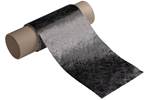Norco develops composite clamshell coverings to protect Siemens engines
The IP55-related GFRP clamshell cocoons protect gas turbine engines during transport while simplifying loading and unloading processes.
Siemens Energy (Munich, Germany) partnered with Norco (Poole, Dorset, U.K.) to develop IP55-rated glass fiber-reinforced plastic (GFRP) cocoons for the company’s range of gas turbine engines.
Previously, Siemens relied on heavy, cumbersome bags that inadequately protected the engines, especially during air transport where steel containers that weighed as much as the engines themselves had to be used. Alternatively, the lightweight composite protective shells developed by Norco offer secure storage and transportation, keeping the engines dry and safeguarded against impact damage.
The engineering phase involved light scanning the engines using GOM photogrammetry due to the sensitive nature of the 3D CAD data. Design was carried out in Siemens NX, incorporating additional service specifications. Norco applied resin infusion methods to create lightweight but high-quality laminate cocoons with excellent stiffness and damage tolerance. The final product is a glass fiber-reinforced part with Kevlar for additional impact performance, and marine-grade fittings for offshore use. The cocoons are also weatherproof and sealed, passing dust and moisture ingress tests to IP55 standards.
They are equipped with a perimeter seal and a 110-volt dehumidifier, simplifying the loading and unloading of the engines. The design also enables positional adjustments of up to 50 millimeters vertically and 100 millimeters horizontally, offering safer and more straightforward engine loading. The base of the cocoon accommodates essential components like the gearbox and starter motor, eliminating the need for their removal and further reducing operational time.
The dubbed Clamshell Cocoons are now in active service. Norco’s ongoing service with Siemens and its customers highlights the company’s proficiency in delivering tailored composite manufacturing solutions.
Related Content
-
Materials & Processes: Fibers for composites
The structural properties of composite materials are derived primarily from the fiber reinforcement. Fiber types, their manufacture, their uses and the end-market applications in which they find most use are described.
-
Composite rebar for future infrastructure
GFRP eliminates risk of corrosion and increases durability fourfold for reinforced concrete that meets future demands as traffic, urbanization and extreme weather increase.
-
The making of carbon fiber
A look at the process by which precursor becomes carbon fiber through a careful (and mostly proprietary) manipulation of temperature and tension.

















